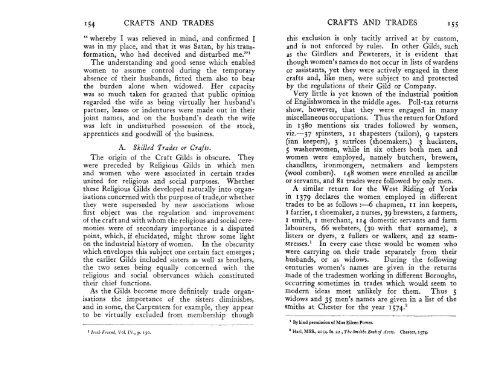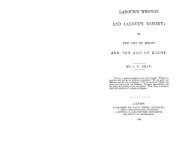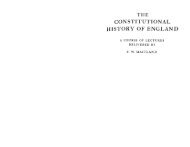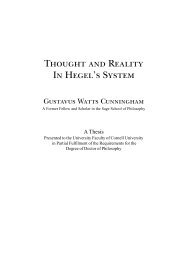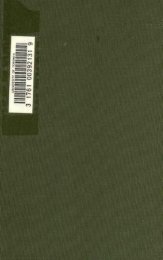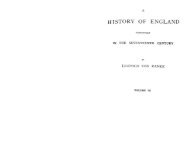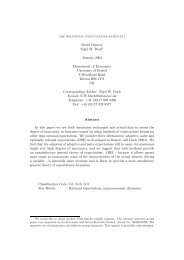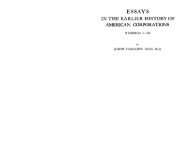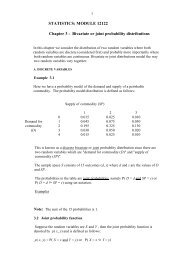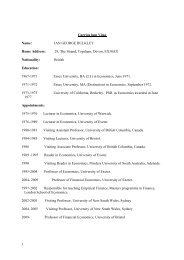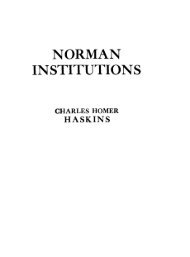1 52 CRAFTS AND TRADESdebts. For example, the Customs <strong>of</strong> the City <strong>of</strong>London declare that : " Where a woman covertede baron follows any craft within the said city byherself apart, with which the husband in no wayintermeddles, such woman shall be bound as a singlewoman in all that concerns her said craft. And ifthe wife shall plead as a single woman in a Court <strong>of</strong>Record, she shall have her law and other advantagesby way <strong>of</strong> plea just as a single woman. And if sheis condemned she shall be committed to prison untilshe shall have made satisfaction ; and neither thehusband nor his goods shall in such case be chargedor interfered with. If a wife, as though a singlewoman, rents any house or shop within the said city,she shall be bound to pay the rent <strong>of</strong> the said house orshop, and shall be impleaded and sued as a singlewoman, by way <strong>of</strong> debt if necessary, notwithstandingthat she was coverte de baron, at the time <strong>of</strong> suchletting, supposing that the lessor did not know there<strong>of</strong>.. . . Where plaint <strong>of</strong> debt is made againstthe husband, and the plaintiff declares that the husbandmade the contract with the plaintiff by the hand <strong>of</strong>the wife <strong>of</strong> such defendant, in such case the saiddefendant shall have the aid <strong>of</strong> his wife, and shallhate a day until the next Court, for taking counselwith his wife."'The Customal <strong>of</strong> the Town and Port <strong>of</strong> Sandwichprovides th~t " if a woman who deals publickly infish, fruit, cloth or the like, be sued to the amount <strong>of</strong>goods delivered to her, she ought to answer eitherwith or without her husband, as the plaintiff pleases.But in every personal plea <strong>of</strong> trespass, she can neitherrecover nor plead against any body, without herhusband. If she be not a public dealer, she cannotanswer, being a covert baron."' Similarly at Rye,CRAFTS AND TRADES '53if any woman that is covert baron be impleadedin plea <strong>of</strong> debt, covenant broken, or chattels withheld,and she be known for sole merchant, she oughtto answer without the presence <strong>of</strong> her baron."'In Carlisle it was said that " where a wife thathaith a husband use any craft within this citie or theliberties <strong>of</strong> the same besides her husband crafte oroccupation and that he me1 not wth her saydcraft this wife shalbe charged as woman sole. Andif the husband and the wife be impledit in such casethe wife shall plead as woman sole. And if she becondempned she shall goe to ward unto she hauemayd agrement. And the husband nor his gudsshal not in this case be charged. And if the womanrefuse to appeare and answere the husband or servandto bryng her in to answer."'Though examples <strong>of</strong> the separate trading <strong>of</strong> <strong>women</strong>occur frequently in the <strong>seventeenth</strong> <strong>century</strong>, no doubtthe more usual course was for her to assist her husbandin his business. When this was transacted at homeher knowledge <strong>of</strong> it was so intimate that she couldsuccessfully ,carry on the management during herhusband's absence. How complete was the reliancewhich men placed upon their wives under thesecircumstances is illustrated by the story <strong>of</strong> JohnAdams, a Quaker from Yorkshire, who took a longjourney " in the service <strong>of</strong> Truth " to Holland andGermany. He describes how a fearful being visitedhim by night in a vision, telling him that he had beendeceived, and not for the first time, in undertakingthis service, and that all was in confusion at home.66 The main reason why things are so is, thy wife,that used to be at the helm in thy business, is dead."Thoroughly alarmed, he was preparing to hurryhome when a letter arrived, saying that all was well,-----p--' Lyon, Dover, Vol. II., p. 359.Lyon. Ewer, Vol. II., p. 295. S Ferguson, Carlzslc p. 79 ; from Dormont Book.- -- -- - -
CRAFTS AND TRADES CRAFTS AND TRADES I55" whereby I was relieved in mind, and confirmed 1was in my place, and that it was Satan, by his transformation,who had deceived and disturbed me."'The understanding and good sense which enabled<strong>women</strong> to assume control during the temporaryabsence <strong>of</strong> their husbands, fitted them also to bearthe burden alone when widowed. Her capacitywas so much taken for granted that public opinionregarded the wife as being virtually her husband'spartner, leases or indentures were made out in theirjoint names, and on the husband's death the wifewas left in undistufbed possession <strong>of</strong> the stock,apprentices and goodwill <strong>of</strong> the business.A. Skilled Trades or Crafts.The origin <strong>of</strong> the Craft Gilds is obscure. Theywere preceded by Religious Gilds in which menand <strong>women</strong> who were associated in certain tradesunited for religious and social purposes. Whetherthese Religious Gilds developed naturally into organisationsconcerned with the purpose <strong>of</strong> trade,or whetherthev were superseded by new associations whosefirst object was the regulation and improvement<strong>of</strong> the craft and with whom the religious and social ceremonieswere <strong>of</strong> secondary importance is a disputedpoint, which, if elucidated, might throw some lighton the industrial history <strong>of</strong> <strong>women</strong>. In the obscuritywhich envelopes this subject one certain fact emerges ;the earlier Gilds included sisters as well as brothers,the two sexes being equally concerned with thereligious and social observances which constitutedtheir chief functions.As the Gilds become more definitely trade organisationsthe importance <strong>of</strong> the sisters diminishes,and in some, the Carpenters for example, they appearto be virtually excluded from membership though' Irtsh Frtend, Vol. IV., p. 150.this exclusion is only tacitly arrived at by custom,and is not enforced by rules. In other Gilds, suchas the Girdlers and Pewterers, it is evident thatthough <strong>women</strong>'s names do not occur in lists <strong>of</strong> wardensor assistants,. yet they were actively engaged in thesecrafts and, like men, were subject to and protectedby the regulations <strong>of</strong> their Gild or Company.Very little is yet known <strong>of</strong> the industrial position<strong>of</strong> English<strong>women</strong> in the middle ages. Poll-tax returnsshow, however, that they were engagecl in manymiscellaneous occupations. Thus the return for Oxfordin 1380 mentions six trades followed by <strong>women</strong>,viz.-37 spinsters, 11 shapesters (tailors), 9 tapsters(inn keepers), 3 sutrices (shoemakers,) 3 hucksters,5 washer<strong>women</strong>, while in six others both men and<strong>women</strong> were employed, namely butchers, brewers,chandlers, ironmongers, netmakers and kempsters(wool combers). 148 <strong>women</strong> were enrolled as ancillaeor servants, and 81 trades were followed by only men.A similar return for the West Riding <strong>of</strong> Yorksin 1379 declares the <strong>women</strong> employed in differenttrades to be as follows :--6 chapmen, I I inn keepers,I farrier, I shoemaker, 2 nurses, 39 brewsters, 2 farmers,I smith, I merchant, I 14 domestic servants and farmlabourers, 66 websters, (30 with that surname), 2listers or dyers, 2 fullers or walkers, and 22 seamstresses.'In every case these would be <strong>women</strong> whowere carrying on their trade separately from theirhusbands, or as widows. During the followingcenturies <strong>women</strong>'s names are given in the returnsmade <strong>of</strong> the tradesmen <strong>working</strong> in different Boroughs,occurring sometimes in trades which would seem tomodern ideas most unlikely for them. Thus Swidows and 35 men's names are given in a list <strong>of</strong> thesmiths at Chester for the year 1574.~* By kind permiseion <strong>of</strong> M~sa Eileen Power.Harl, MSS., 2054. fo. 22 , The Sm itbs Book ?f Arrts. Chester, 1574.
- Page 1 and 2:
WORKING LIFE OF WOMENIN THESEVENTEE
- Page 6 and 7:
4 INTRODUCTORYtragic class of wage
- Page 8 and 9:
8 INTRODUCTORY INTRODUCTORYDomestic
- Page 10 and 11:
INTRODUCTORYunmarried girls go out
- Page 12 and 13:
I 6 CAPITALISTS CAPITALISTS" I loos
- Page 14 and 15:
CAPITALISTSweak woman stands in the
- Page 16 and 17:
24 CAPITALISTS CAPITALISTS 25wife t
- Page 18 and 19:
2 8 CAPITALISTS CAPITALISTS 29Majes
- Page 20 and 21:
32 CAPITALISTSA warrant was issued"
- Page 22 and 23:
CAPITALISTSbusiness. " At O~tend, N
- Page 24 and 25:
CAPITALISTS CAPITALISTS41thro' her
- Page 26 and 27:
AGRICULTUREwas made of their develo
- Page 28 and 29:
AGRICULTUREis not drye as it should
- Page 30 and 31: 52 AGRICULTURE AGRICULTUREhave of h
- Page 32 and 33: 56 AGRICULTUREfor colonists in Virg
- Page 34 and 35: AGRICULTUREmaintain completely the
- Page 36 and 37: 64 AGRICULTUREtime was well spent i
- Page 38 and 39: AGRICULTUREExcept in exeptional cir
- Page 40 and 41: 72 AGRICULTURE AGRICULTURE 73mainta
- Page 42 and 43: 76 AGRICULTUREfor the impotent poor
- Page 44 and 45: AGRICULTUREwhich we can imagine tha
- Page 46 and 47: AGRICULTURE AGRICULTURE 85by his se
- Page 48 and 49: AGRICULTUREher work, but generosity
- Page 50 and 51: AGRICULTUREwife of Thos. Lyne. Toba
- Page 52 and 53: TEXTILESwas paid better than the la
- Page 54 and 55: TEXTILESroof provided them with the
- Page 56 and 57: 104 TEXTILESformulated by 25 Charle
- Page 58 and 59: 108 TEXTILES TEXTILES 109until the
- Page 60 and 61: TEXTILESon spinning for their livin
- Page 62 and 63: TEXTILESstill and dry within Doors,
- Page 64 and 65: 120 TEXTILES TEXTILESthe cloth made
- Page 66 and 67: 124TEXTILES TEXTILESin the closely
- Page 68 and 69: TEXTILESKingdom, it required a grea
- Page 70 and 71: 132 TEXTILES TEXTILESnot exceedl6 1
- Page 72 and 73: TEXTILES TEXTILES I37hours in four
- Page 74 and 75: ---P-I 4OTEXTILEScan be quoted of t
- Page 76 and 77: '44 TEXTILES TEXTILESWood Streate,
- Page 78 and 79: TEXTILEShigher wages than would hav
- Page 82 and 83: I 56 CRAFTS AND TRADES CRAFTS AND T
- Page 84 and 85: 160 CRAFTS AND TRADES CRAFTS AND TR
- Page 86 and 87: 164 CRAFTS AND TRADESAmong thirty-n
- Page 88 and 89: CRAFTS AND TRADESalso met with as b
- Page 90 and 91: 172 CRAFTS AND TRADES CRAFTS AND TR
- Page 92 and 93: 176 CRAFTS AND TRADESto Henry Joyce
- Page 94 and 95: 180 CRAFTS AND TRADES CRAFTS AND TR
- Page 96: CRAFTS AND TRADESWardens and Brothe
- Page 99 and 100: P-I9OCRAFTS AND TRADESmarriage ; it
- Page 101 and 102: CRAFTS AND TRADEStaken our goods fr
- Page 103 and 104: 1g8CRAFTS AND TRADESresources turne
- Page 105 and 106: CRAFTS AND TRADESThere were fewer r
- Page 107 and 108: 206 CRAFTS AND TRADES CRAFTS AND TR
- Page 109 and 110: CRAFTS AND TRADESA large proportion
- Page 111 and 112: 214CRAFTS AND TRADES CRAFTS AND TRA
- Page 113 and 114: 218 CRAFTS AND TRADES CRAFTS AND TR
- Page 115 and 116: 222 CRAFTS AND TRADES CRAFTS AND TR
- Page 117: CRAFTS AND TRADES CRAFTS AND TRADES
- Page 120 and 121: CRAFTS AND TRADESfrom her fellow pa
- Page 122 and 123: PROFESSIONS 237PROFESSIONSIntroduct
- Page 124 and 125: 24O PROFESSIONS PROFESSIONStheir Th
- Page 126 and 127: 244 PROFESSIONS PROFESSIONS 245the
- Page 128 and 129: PROFESSIONS PROFESSIONS 249profanat
- Page 130 and 131:
252PROFESSIONSGiles Moore enters in
- Page 132 and 133:
PROFESSIONScribed as one who " dist
- Page 134 and 135:
PROFESSIONS PROFESSIONS 261first ma
- Page 136 and 137:
264 PROFESSIONSGarrett's leg shall
- Page 138 and 139:
268 PROFESSIONSwhere there are none
- Page 140 and 141:
PROFESSIONS PROFESSIONS 273the numb
- Page 142 and 143:
PROFESSIONSexaminations, before six
- Page 144 and 145:
PROFESSIONS PROFESSIONS 281death me
- Page 146 and 147:
284 PROFESSIONS PROFESSIONSof confi
- Page 148 and 149:
288 PROFESSIONSextent they were whe
- Page 150 and 151:
CONCLUSIONor in her other facilitie
- Page 152 and 153:
CONCLUSION CONCLUSION 297in women's
- Page 154 and 155:
CONCLUSIONlaw of Nature, inviolable
- Page 156 and 157:
CONCLUSIONwere specially deprecated
- Page 158 and 159:
308 CONCLUSIONof the State, and the
- Page 160 and 161:
312 AUTHORITIES AUTHORITIES 313Cost
- Page 162 and 163:
AUTHORITIESMartindale, Adam, The Li
- Page 164 and 165:
County.Buckingham ..Cardigan .. ..C
- Page 166 and 167:
INDEXINDEXFlax, 64, 146, 246, 291 ;
- Page 168:
INDEXsmants, women( 50,65,157 ; mam


